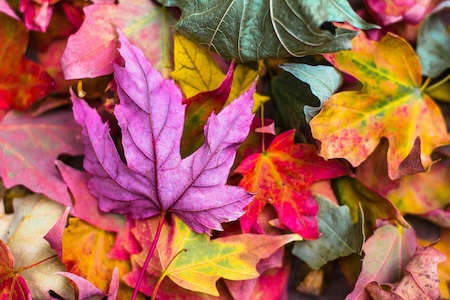
Idaho’s Journey Through Time: A Comprehensive History of the Gem State
October 23, 2024
Exploring the Rich History of Utah: From Mormon Pioneers to Modern Times
October 28, 2024Exploring the Rich History of Wyoming: From Fur Traders to Cowboys
Wyoming, known as the Cowboy State, has a rich and captivating history that dates back to its early days as a hub for fur traders. From the arrival of European explorers to the establishment of the first settlements, Wyoming has played a significant role in shaping the American West. This article takes you on a journey through the fascinating past of Wyoming, exploring its iconic cowboy culture and the events that have shaped the state into what it is today.
The Fur Trade Era: Wyoming’s Early Days
Wyoming’s history can be traced back to its early days as a hub for fur traders. In the early 1800s, European explorers ventured into the region in search of valuable furs, particularly beaver pelts. The fur trade brought a wave of trappers and traders to Wyoming, establishing trading posts and creating a thriving industry. These early pioneers played a crucial role in the exploration and development of the region, paving the way for future settlers and shaping Wyoming’s history.
The Oregon Trail and the Expansion of the West
The Oregon Trail played a significant role in the expansion of the West and the settlement of Wyoming. In the mid-1800s, thousands of pioneers embarked on the treacherous journey along the Oregon Trail in search of new opportunities and a better life. Wyoming served as a crucial stopping point along the trail, providing weary travelers with much-needed rest, supplies, and a chance to replenish their resources. The trail brought a wave of settlers to Wyoming, contributing to the growth and development of the state. Today, the Oregon Trail is a symbol of the westward expansion and a reminder of the hardships and triumphs of those who ventured into the unknown.
The Rise of the Cowboy Culture in Wyoming
The rise of the cowboy culture in Wyoming can be traced back to the late 1800s when cattle ranching became a prominent industry in the state. As settlers moved westward, they brought their cattle with them, and Wyoming’s vast open plains provided the perfect grazing land. Cowboys, known for their skills in herding and managing cattle, played a crucial role in the success of the ranching industry.
The cowboy way of life quickly became ingrained in Wyoming’s identity, with ranches and cattle drives becoming common sights across the state. Cowboys were known for their ruggedness, independence, and strong work ethic. They spent long days on horseback, tending to the herds and ensuring their safety.
Wyoming’s cowboy culture was further solidified with the establishment of iconic events such as rodeos and cattle roundups. These gatherings brought together cowboys from different ranches, showcasing their skills in roping, riding, and other cowboy activities. Rodeos became a popular form of entertainment for both locals and tourists, and they continue to be a celebrated tradition in Wyoming today.
The cowboy culture in Wyoming is not just a thing of the past. It remains a vital part of the state’s heritage and is celebrated through various events, museums, and attractions. Visitors can experience the cowboy way of life firsthand by attending a rodeo, visiting a working ranch, or exploring the cowboy-themed exhibits in museums.
Wyoming’s rich history as a hub for fur traders and its transformation into a cowboy state is a testament to the resilience and spirit of its people. The cowboy culture continues to shape Wyoming’s identity and serves as a reminder of the state’s pioneering roots.
Famous Outlaws and Lawmen of Wyoming
Wyoming’s history is filled with famous outlaws and lawmen who left their mark on the state’s wild frontier. One of the most notorious outlaws was Butch Cassidy, who, along with his gang, the Wild Bunch, carried out numerous bank and train robberies throughout the late 1800s. Cassidy’s daring escapades and ability to elude capture made him a legendary figure in Wyoming’s history.
On the other side of the law, Wyoming was home to notable lawmen who worked tirelessly to bring justice to the region. One such lawman was Tom Horn, a skilled tracker and detective who was known for his sharpshooting abilities. Horn was involved in various high-profile cases, including the capture of outlaw Matt Rash and the investigation into the murder of cattleman Willie Nickell.
Another famous lawman from Wyoming was Nate Champion, who played a pivotal role in the Johnson County War, a conflict between cattle barons and small ranchers in the late 1800s. Champion, along with a group of other ranchers, defended their land against the hired guns of the cattle barons, earning him a place in Wyoming’s history as a hero of the common man.
The stories of these famous outlaws and lawmen continue to captivate the imagination and serve as a reminder of Wyoming’s wild and untamed past. Visitors to the state can explore the sites associated with these legendary figures, such as the Hole-in-the-Wall hideout, where Butch Cassidy and his gang sought refuge, or the historic Johnson County Courthouse, where the events of the Johnson County War unfolded.
Wyoming’s Role in the Women’s Suffrage Movement
Wyoming holds a significant place in the history of the women’s suffrage movement. In 1869, the territory of Wyoming became the first place in the United States to grant women the right to vote. This landmark decision was met with both praise and criticism, but it set a precedent for the rest of the country to follow.
Wyoming’s early adoption of women’s suffrage was influenced by several factors. The territory had a small population and was eager to attract settlers, so granting women the right to vote was seen as a way to encourage more women to move to Wyoming. Additionally, many of the men in Wyoming at the time were supportive of women’s rights and saw the value in allowing women to participate in the political process.
The decision to grant women the right to vote in Wyoming was met with resistance from some other states and territories. It wasn’t until 1920, with the passage of the 19th Amendment to the U.S. Constitution, that women’s suffrage became the law of the land. However, Wyoming’s early adoption of women’s suffrage played a crucial role in the overall movement and served as a beacon of progress for women’s rights.
Today, Wyoming continues to honor its role in the women’s suffrage movement. The state’s capital, Cheyenne, is home to the Wyoming State Museum, which features exhibits on the history of women’s suffrage in the state. Visitors can learn about the brave women who fought for their right to vote and the impact their efforts had on the larger movement for women’s rights.
Here’re eight other things America’s 44th state has to offer:
- Breathtaking Natural Beauty: Wyoming is known for its stunning natural landscapes, including the iconic Yellowstone National Park and Grand Teton National Park. From majestic mountains to vast prairies, the state offers a diverse range of outdoor adventures and breathtaking views.
- Wildlife Galore: With its vast open spaces and protected areas, Wyoming is home to a rich variety of wildlife. Visitors can spot iconic animals such as bison, elk, moose, wolves, and even grizzly bears. Wildlife enthusiasts will be in awe of the opportunities for wildlife viewing and photography.
- Outdoor Recreation Paradise: Wyoming is a haven for outdoor enthusiasts. Whether you enjoy hiking, camping, fishing, hunting, skiing, or snowboarding, the state offers endless opportunities for outdoor recreation. With its wide-open spaces and pristine wilderness, Wyoming is the perfect playground for adventure seekers.
- Old West History: Wyoming has a rich history deeply rooted in the Old West. Visitors can explore historic sites such as the famous town of Cody, known for its connections to Buffalo Bill Cody, or visit the Wyoming Frontier Prison in Rawlins. Immerse yourself in the cowboy culture and experience a taste of the Wild West.
- The Great American Eclipse: In 2017, Wyoming was one of the prime locations to witness the Great American Eclipse, a rare celestial event where the moon completely blocked the sun. Thousands of people flocked to Wyoming to witness this awe-inspiring phenomenon, making it a memorable experience for both residents and visitors.
- Friendly Communities: Wyoming is known for its friendly and welcoming communities. Whether you’re exploring the small towns or larger cities like Cheyenne or Jackson Hole, you’ll find a warm and inviting atmosphere. Locals are often eager to share their love for the state and offer recommendations for the best places to visit.
- Rich Native American Culture: Wyoming is home to several Native American tribes, including the Eastern Shoshone and Northern Arapaho tribes. Visitors can learn about their rich cultural heritage through museums, powwows, and cultural events. It’s an opportunity to gain a deeper understanding of Wyoming’s diverse history.
- Personalized Newspapers: If they’re ever looking for the perfect gift to get someone in their life, Wyomingites can have a My FrontPage Story shipped directly to their doorstep.
Wyoming offers a unique blend of natural beauty, outdoor adventures, rich history, and friendly communities. Whether you’re seeking a thrilling outdoor experience or a glimpse into the Old West, Wyoming has something to offer everyone.
Written by Ubersuggest




